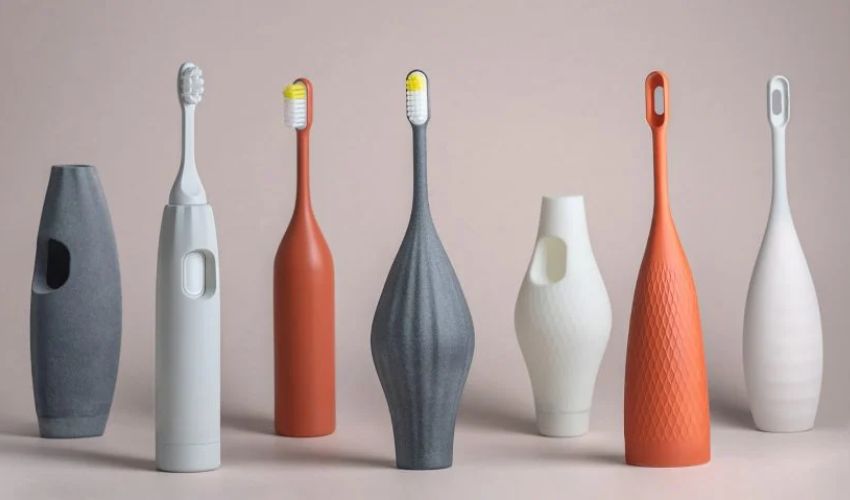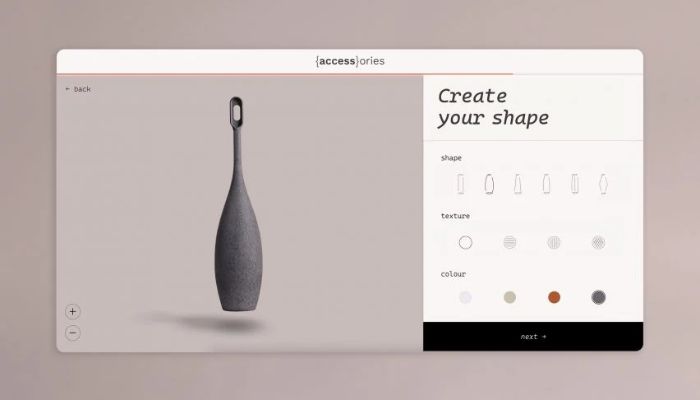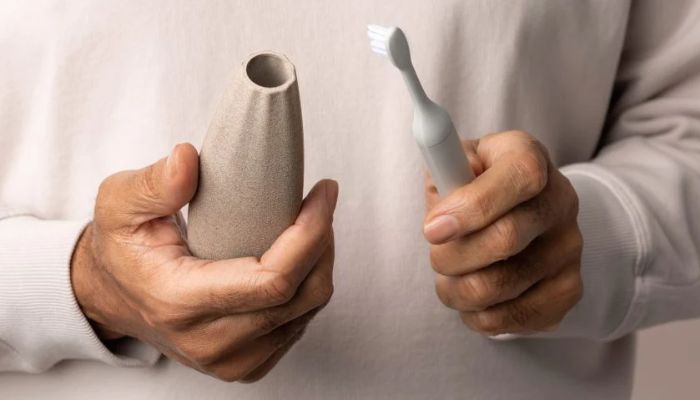Landor & Fitch’s 3D Printed Toothbrushes Help Those With Limited Dexterity

Brushing one’s teeth is a daily ritual, part of a personal hygiene routine instilled in us from the earliest ages. Yet the repetitive, minute brushing process can often be a painful or even impossible task for millions of people worldwide with limited movement and dexterity. Those with medical conditions such as arthritis, carpal tunnel, tremors or those resulting from an injury often do not have the same ability to brush with the same efficacy. To address the problem of accessibility, brand consultancy firm Landor & Fitch has released a design series of 3D printed toothbrush grips aimed at creating custom solutions for maneuvering oral hygiene.
The toothbrush grips, known as ‘Accessories’ are 3D printed after being fed the results of a customer-answered questionnaire which helps identify the correct shape that is best suited for the needs of each individual person. The questions range from whether you use an electric or manual toothbrush, to what shape of object is most comfortable to hold – complete with real-world examples. After the final adjustment phase, the user is then able to receive a custom-sized and shaped toothbrush, down to the details of texture and color.

The questions range from whether you use an electric or manual toothbrush, to what shape of object is most comfortable to hold – complete with real-world examples.
All in all, Accessories is able to create 142 different design permutations, depending on the needs of the individual customer. The advantage of 3D printing the parts is that the production costs remain low, despite the wide degree of customization. “The Accessories digital platform allows users to personalise their toothbrush handles, providing an efficient but also equally desirable and affordable solution to a daily but often-unseen barrier,” explains Landor & Fitch global chief innovation officer, Luc Speisser, “We cannot continue to unintentionally exclude the one-billion people living on this planet who are experiencing some form of disability.”
Intent on innovating with accessibility and equity in mind, Speisser pointed out the need to include the target customer base in the product design, “To avoid bad design in general, and even more so when it comes to people living with disabilities, it is critical to recruit a representative group of the people you want to design for. And, in fact, not design for them but design with them. This is the best and fastest way to check if you are on the right track.” Indeed, the team at Landor & Fitch put together a series of hands-on workshops where people with various limitations to their range of motion could mold, test and provide feedback on the prototype parts in every step of the process.
The end result is an elegantly 3D printed toothbrush that provides greater comfort with a sleek, modern design to give the Accessories a decorative or nondescript appearance, rather than the use of an improvised homemade ‘hack’ with rubber bands or duct tape that many of their testers reported using before the Accessories toothbrush. To learn more about the product and to design one yourself, check the Accessories website HERE.

The visible difference in grip shape between a standard toothbrush and an Accessories holder.
What do you think of the Accessories 3D printed toothbrush? Let us know in a comment below or on our LinkedIn, Facebook, and Twitter pages! Don’t forget to sign up for our free weekly newsletter here, the latest 3D printing news straight to your inbox! You can also find all our videos on our YouTube channel.
*All Photo Credits: Accessories






